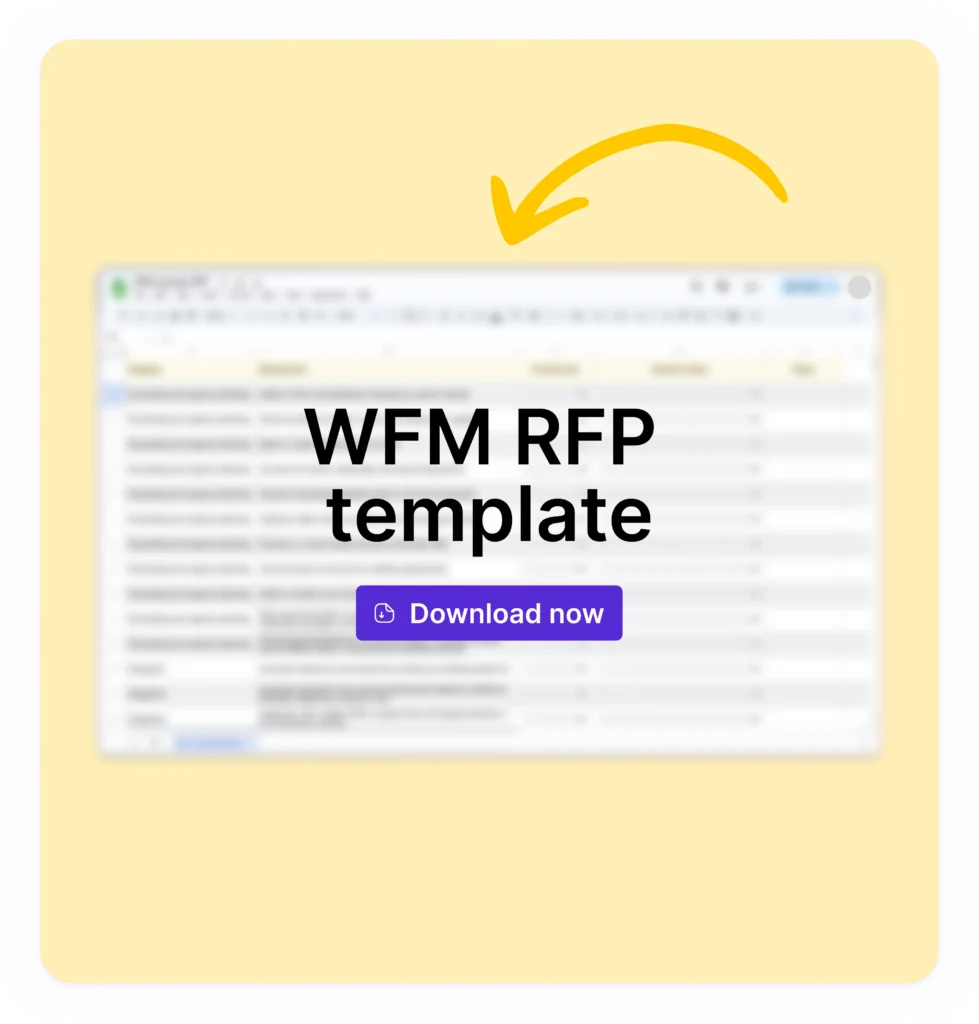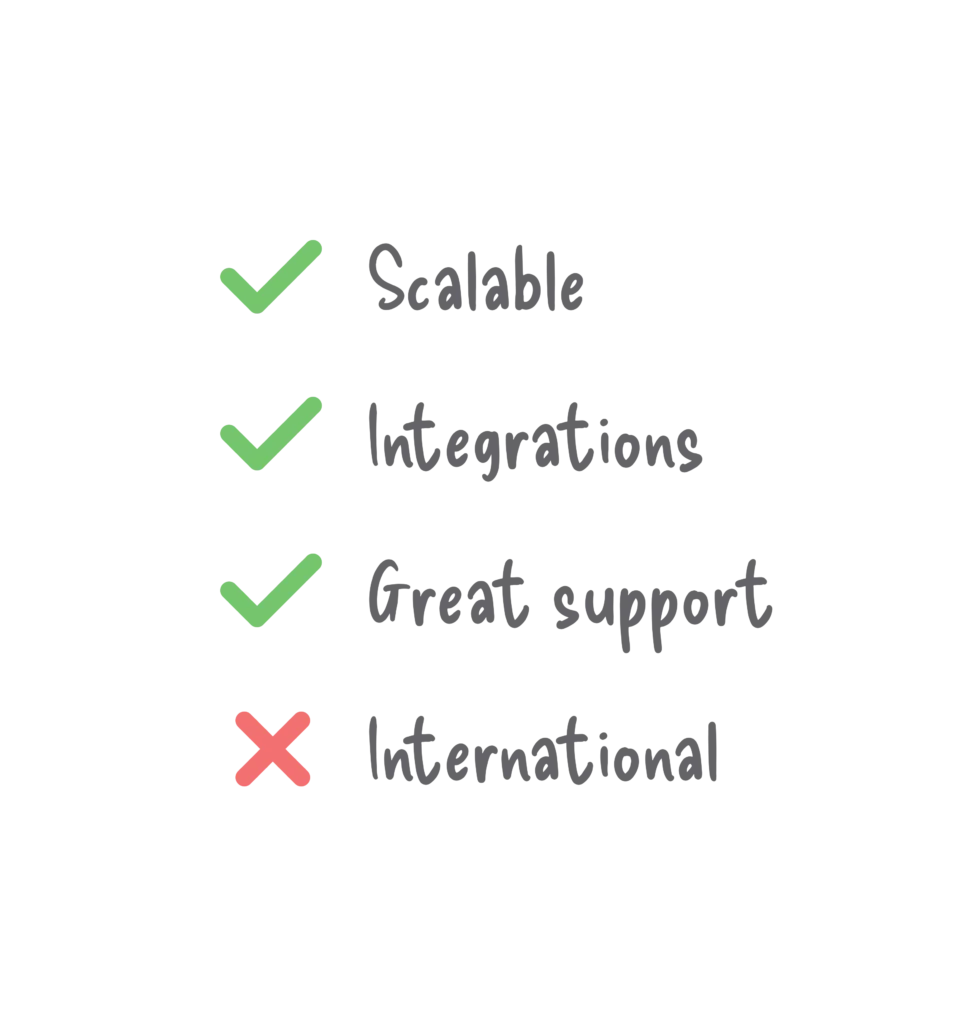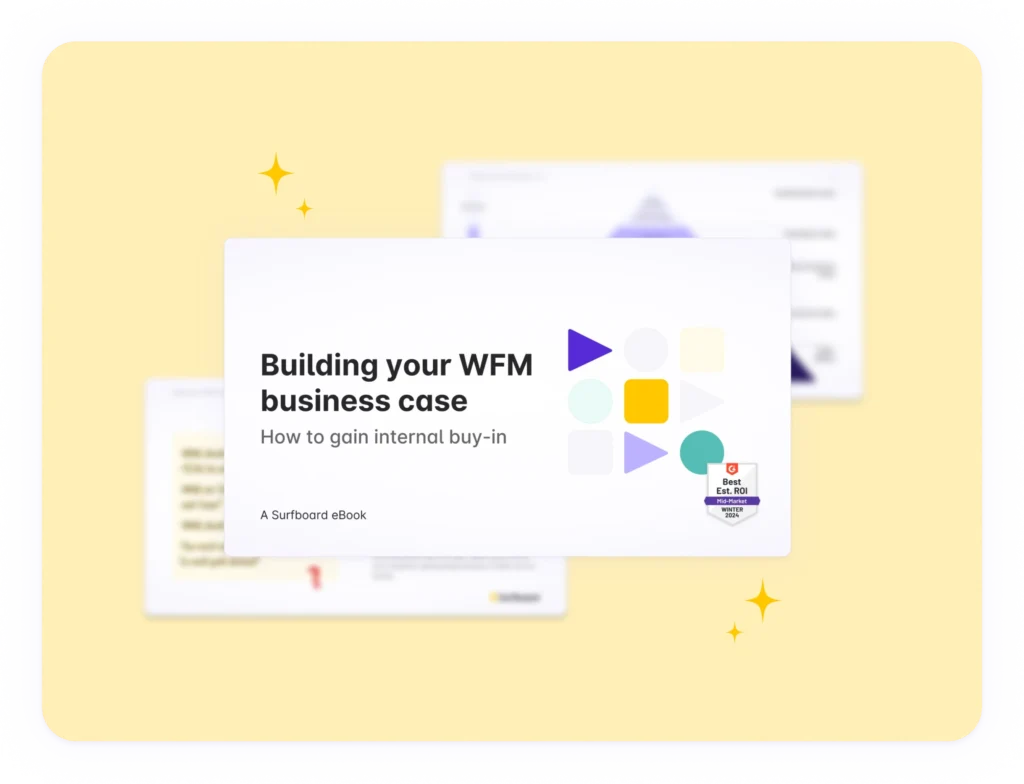
WFM RFP template
Download our free RFP template to guide you through the process of evaluating workforce management software solutions.


When running your support team’s operations, at some point you’ll outgrow your old scheduling and management system whether they’re on spreadsheets or another workforce management tool.
If you’re running your support team’s operations, you need a workforce management system (WFM) which is tailored to your needs. And not just any WFM tool will do – you need one which matches the specific priorities of your business, the capabilities of your team, and the needs of your customers.
That’s where Surfboard’s workforce management RFP template comes in – to help you in finding new RFP solutions. Use our WFM RFP template to get a solution that’ll get the best from your team, and give the best to your customers.
Your complete WFM RFP template
What is an RFP?
RFP stands for request for proposals. It might feel overwhelming when you’re selecting a WFM solution – there’s a lot to choose from!
The role of an RFP is to clearly define your specific requirements and expectations for a WFM solution, encouraging potential vendors to present tailored, competitive offerings. It ensures thoughtful evaluation of potential WFM systems, focusing on aspects which matter most to you. Ultimately, an RFP is instrumental in enabling you to make well-informed decisions, allowing your WFM tool to suit your operational needs and future objectives.
The role of RFP in workforce management solution procurement
As you fill out an RFP, you’ll note the capabilities of a solution which your ideal WFM system possesses. Examples of things you might look for in a solution include:
- Can handle scheduling your team with your specific requirements
- Schedule analytics for absenteeism, shrinkage, and capacity levels
- Integrates with your existing technology stack
- Automatic distribution of intraday activities within scheduled shifts
- Reporting of adherence and performance metrics
Armed with a detailed RFP, you’ll refine your search to just WFM tools that’ll match your business. A WFM solution which isn’t capable of fulfilling your demands won’t do you any good and you’ll find yourself back at square one, wanting to make another switch. But in the same way, WFM software that’s bloated with unnecessary features will increase onboarding time and frustrate your team – you don’t want this either.
Using an RFP, you can save time in combing through irrelevant software features and ensure that the solution you choose will be the right one for your team and your business. This also helps vendors self-assess whether they’re the right solution for you.
How to write an effective WFM RFP
When finding new RFP solutions and writing about your needs, you should make sure you note all your target features. You’re looking for your ideal WFM solution here, not settling on software that only meets some of your needs. Don’t fall into the trap of only listing your current capabilities.
Unsure about what features WFM can offer? Find out about Surfboard’s capabilities here.
Beyond just making a wish list, it’s important to break down your ideal features further. In your RFP, you should also set your priority level for each feature. By assessing your team’s current operational requirements, you should identify your must-have WFM features, and what features you could live without.
Bear in mind that as your business expands, your support team’s capabilities should also increase. If certain features stand out as something that might be useful in the future, add these to your RFP. You’ll thank yourself in the future- when you find that your WFM solution keeps up with your growth!
Essential elements of a WFM RFP template
Not all WFM solutions are built the same, with some missing some really crucial features that are key to your business needs. Read below about some essential elements that you need to make sure are included in your RFP.
Integration capabilities with current CS tools
Your chosen solution should fit alongside tools that you’re already using. Not only will this allow you to build upon your existing CS strategies, but it’ll also speed up the onboarding time and make the experience much easier. With integration capabilities as one of your priorities, you’ll be able to hit the ground running with your WFM solution.
Read about how Surfboard’s integration capabilities helped Drift get on board in just one week.
Modern scheduling features
If you’re in the market for a WFM solution, there’s a good chance that you want to move past your outdated scheduling techniques. Make sure this is apparent in your RFP proposal. When detailing your needs, prioritise scheduling features like skill-based scheduling, intraday scheduling, forecasting driven scheduling, and ease of schedule creation. Replace the pain of manual scheduling with features like these which will help speed up your processes, giving you time to focus on what’s really important.
Smart analytics features
Make sure that your ideal WFM solution serves you with quality, relevant data. You should be able to track the success of your customer service, both at the team and individual level.
Taking things a step further, you should ensure that your WFM platform is able to clearly report data in a way that’s useful to you, allowing you to make data-driven decisions to improve your CS team. Don’t settle for a solution that locks away your metrics. Instead, prioritise features in your RFP which create usable insights that allow you to create a positive feedback loop of customer service excellence.
Quality user experience
Ultimately, a powerful WFM solution won’t do you much good if it’s difficult to use. An easy-to-use interface for both you and your team should be a top priority when evaluating WFM tools. Features like intuitive platform navigation, mobile-friendly capabilities, and a glitch-free system are key to ensuring your chosen solution is one that really works, without encouraging attrition.
An ideal solution will have dedicated customer support, too. Don’t settle for a WFM vendor who will leave you in the dark after you sign a contract. When filling out an RFP, prioritise onboarding as a joint experience between you and your WFM solution. Keep lines of communication open and guarantee your vendor addresses any issues you might have – read about how Surfboard ensured Butternut Box’s experience was positive, every step of the way.
Step-by-step guide to filling out your WFM RFP template
For a free, easy to use workforce management RFP template, look no further than Surfboard’s RFP template.
In this template, capabilities are broken down into simple categories:
- Forecasting and capacity planning
- Customer support and implementation
- User / Agent experience
- Data security and compliance
- Scheduling
- Reporting and analytics
- Budget
Within each category, you’ll find different aspects and features which relate to the needs of you and your CS team. Along with each feature, use the ‘priority level’ tab to note the importance of each key requirement to your team. Whether it’s ‘high’, ‘medium’, or ‘low’, figure out what aspects of a WFM solution matter to you.
While you fill out this template, talk things over with representatives from your team and double check that you’re aligned with their requirements. If your solution requires a little more nuance (eg. Under ‘Agent experience: Mobile-friendly app interface’, you want to ensure that the WFM solution runs on Android mobile devices’), make sure you add any extra info to the ‘notes’ tab on the right!
Once you’ve filled these out, all that’s left is the ‘solution status’ tab. Armed with your workforce management RFP template, you’re ready to shop for the right WFM solution!
Evaluating your WFM solution proposals
As you look at different vendors and the solutions they offer, go through your WFM RFP template and use the ‘solution status’ to note how each of your requirements is or isn’t met. Surfboard’s RFP template breaks down availability of a solution into ‘available’, ‘can partially fulfil’, ‘unavailable’, and ‘custom solution required’.
Don’t hesitate to inquire about all the features which matter to you. Remember, you’re not just looking for a tool which addresses some of your issues- you’re looking for a one-stop solution to your WFM needs.
For each vendor you’re looking at, make a separate WFM RFP template which details the viability of each solution, and how it meets / doesn’t meet your needs. With this, it’ll be easy to weigh-up the pros and cons of potential platforms and find the one which will maximise your success.
The easiest way to fill your WFM RFP template is to get an in-depth product tour with your chosen vendor, where you can ask questions and see all that a potential solution has to offer.
Book a demo with Surfboard today to see how we can help meet each of your requirements.
Learn how to build a solid WFM business case
Our eBook will walk you through the process of translating operational challenges into persuasive, solution-focused metrics, effectively securing buy-in from your decision-makers.

Summary
Surfboard’s workforce management RFP template is a strategic tool designed to support your transition from outdated systems to a WFM solution that fits perfectly with your operational requirements. This template guides you through an evaluation process, to ensure that your WFM tool enhances your team’s performance and customer satisfaction.
By delineating specific requirements and expectations, Surfboard’s template facilitates a targeted search, enabling you to find a WFM solution that not only addresses your immediate needs, but is also scalable to adapt to future growth.
Our template breaks down essential features into categories like forecasting, user experience, and data security, allowing you to prioritise their needs effectively. It’ll serve as a communication bridge between your team and potential vendors, ensuring that proposals are completely aligned with your team’s needs and objectives.
If you haven’t already, download our free template below – get started on your next step to customer service success today!
FAQs
What is an RFP?
An RFP, or request for proposal, is a formal document that organisations use to outline their specific needs and requirements for a particular service or product. In the context of workforce management (WFM), an RFP helps businesses clearly communicate their expectations and priorities for a WFM solution, inviting potential vendors to submit tailored proposals that meet with these requirements.
How do you write an RFP?
Writing an RFP involves detailing your organisation’s needs, objectives, and criteria for the desired product or service. For a WFM RFP, you should include your operational requirements, desired features, integration needs, and any specific challenges you wish to address. The RFP should be clear, comprehensive, and structured in a way that enables vendors to provide relevant and competitive proposals.
How do I use a WFM RFP?
You use a WFM RFP to guide your search for the ideal workforce management solution. By outlining your specific needs and desired features, you can attract proposals from vendors whose solutions align with your requirements. The RFP process enables you to compare these solutions systematically, ensuring you choose a WFM tool that enhances efficiency, meets your operational needs, and is scalable for future growth.
What is RFP in BPO?
In the Business Process Outsourcing (BPO) sector, an RFP is used to detail the services and solutions a company seeks from potential outsourcing partners. It specifies the scope of work, expectations, and criteria for the services required, allowing BPO providers to present proposals that demonstrate how they can meet the company’s needs. An RFP in BPO is crucial for finding a partner that aligns with the company’s goals, quality standards, and operational requirements.


